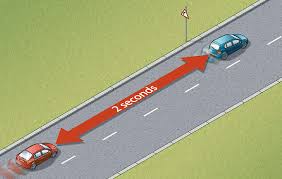
Adequate clearance while driving will keep you and people around you safe.
What is adequate clearance?
Adequate clearance is to create a safety bubble around your car from the front, back and sides.
Clearance from the front
When you stop behind other vehicles in traffic (at traffic lights or a junction, for example), always leave adequate clearance between you and the car in front. You should stop to the point where you should be able to see tyres of the vehicle in front and bit of tarmac.
Clearance to the back
Don’t speed up
If the car behind is too close (known as ‘tailgating’), don’t speed up to increase the distance between you. Remember that adequate clearance means creating a protective bubble to front and sides as well as the back. If another car is compromising your bubble from behind, you can compensate by gently slowing down to increase the clearance to the front. By giving yourself more room in front, you give yourself more space for braking, which helps prevent multiple car pile-ups.
Clearance to the sides
Driving at 30mph
Keep a metre away from parked cars. A metre is roughly the width of an open car door. It’s also enough space to give yourself reaction time if someone steps out from between parked cars.
Narrow roads
If the road is too narrow for you to spare a full metre, slow down. As a rough guide, cut your speed by 10mph for every third of a metre that you lose in clearance. Never get too close because you’re likely to clip wing mirrors.
Found this article interesting, then share with your friends and families.
If you are looking for driving school in Leicester then call on 07830536037 or fill out a contact form.
